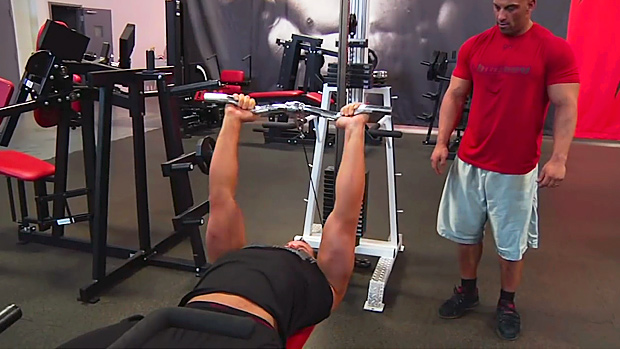TUT and Rep Tempo: Slower Isn't Better
Time under tension (TUT) refers to how long the muscle is under strain during a set. For size gains, most think you need around 60-90 seconds of TUT.
Most lifters pay attention to rep speed to increase TUT. For example, they may do a biceps curl where they take 4 seconds to lower to the bar (the eccentric) and 2 seconds to lift the bar (the concentric) on every rep. That's a 6-second rep. Do 10 reps like that and you've reached 60 seconds of time under tension.
Altering rep tempo is one way of increasing time under tension. However, simply slowing down reps doesn't necessarily mean you'll increase TUT unless you have a pre-determined rep scheme. So if you're doing sets of 10 bicep curls and decide to increase your rep tempo from 2 seconds down, 1 second up (2:1) to 4 seconds down and 2 seconds up (4:2), you increased time under tension.
Now, assume you're going for 60 seconds of TUT. You could do 20 reps at 2:1 or 10 reps at 4:2 or any combination of reps and rep tempo that will equal 60 seconds. However, when you alter rep tempo while maintaining a similar rep scheme, the volume load changes.
Back to the bicep curl example, if you do a set of 10 reps at a 2:1 rep tempo and you're going for failure at the 10th rep, let's assume you're able to use a 30 pound dumbbell. If you do that same set of 10 to failure with a 4:2 rep tempo you may only be able to use a 20 pound dumbbell. So you increased TUT at the expense of load volume.
This is what makes studying TUT so difficult. Intensity (load), load volume, rep tempo, total time under tension, and training to failure (or not) are all intertwined. When you adjust one, the others fluctuate too.
Researchers have been trying to determine the best rep tempo with mixed results for this reason. This new study compares two different rep tempos and the effect they have on strength and hypertrophy.
The Study
Twenty-four male, collegiate soccer players were recruited for the study. They were split into two counterbalanced groups. Both groups underwent back squat training twice a week for six weeks.
They did 3 sets until failure at 75% of their 1RM. The only difference was that one group used a 2:2 eccentric/concentric rep tempo and the other used a 4:2. Both groups were given 25 grams of protein in a shake immediately post workout.
Results
The volume load was significantly higher in the 2:2 than 4:2 group (36% greater). The 2:2 group did more reps across each set before failure.
Concentric TUT was significantly greater in the 2:2 compared to 4:2 group (which makes since because of the greater number of reps). Eccentric or negative TUT was significantly greater in the 4:2 group compared to 2:2 group. Total time under tension was not significantly different between the two groups.
On the performance side, the 2:2 group's 1RM was significantly greater than the 4:2 group at the midway point and at the end of the study. The 1RM on average in the 2:2 group increased by 17.7 kg from the pre-post test. The 1RM in the 4:2 group increased 10 kg on average from pre-post test.
Now for the hypertrophy results you've all been waiting for. There was no difference between groups in cross-sectional area of the thigh. Significant increases in CSA at proximal, middle, and distal thigh were seen in both groups. And the increases were greatest in the distal portion (closest to the knee).
What All This Means
Time under tension has to do with total SET duration, not REP duration.
Across multiple weeks with a total TUT equivalent, the greater benefit still seems to come from the group with a greater load volume. Why? Because although gains in CSA were similar in this study, the strength gains between groups were not.
The significantly greater total eccentric time in the 4:2 group didn't lead to greater hypertrophy. While slow eccentrics and longer rep durations can be useful in certain situations, the evidence for their superiority in muscle growth and strength is lacking.
With time under tension the same (equivalent total set duration) it appears more effective to do more reps at a slightly faster tempo.
Reference
- Shibata, K, Takizawa, K, Nosaka, K, and Mizuno, M. Effects of prolonging eccentric phase duration in parallel back-squat training to momentary failure on muscle cross sectional area, squat one repetition maximum, and performance tests in university soccer players. J Strength Cond Res XX(X): 000– 000, 2018





